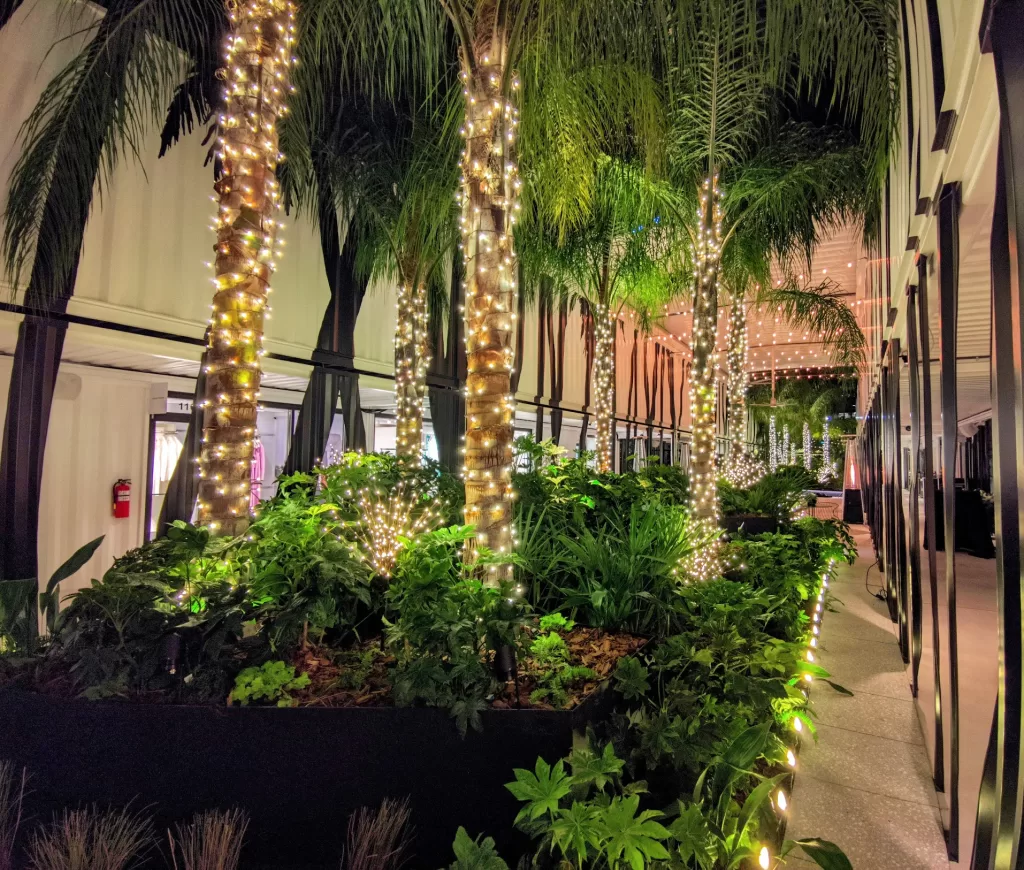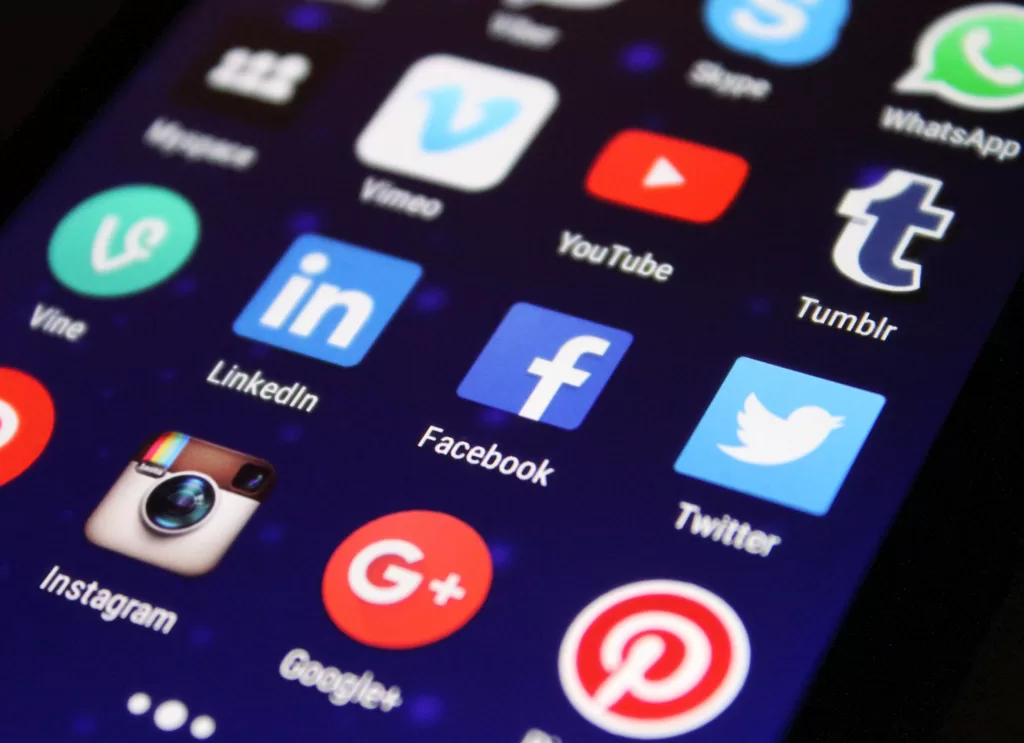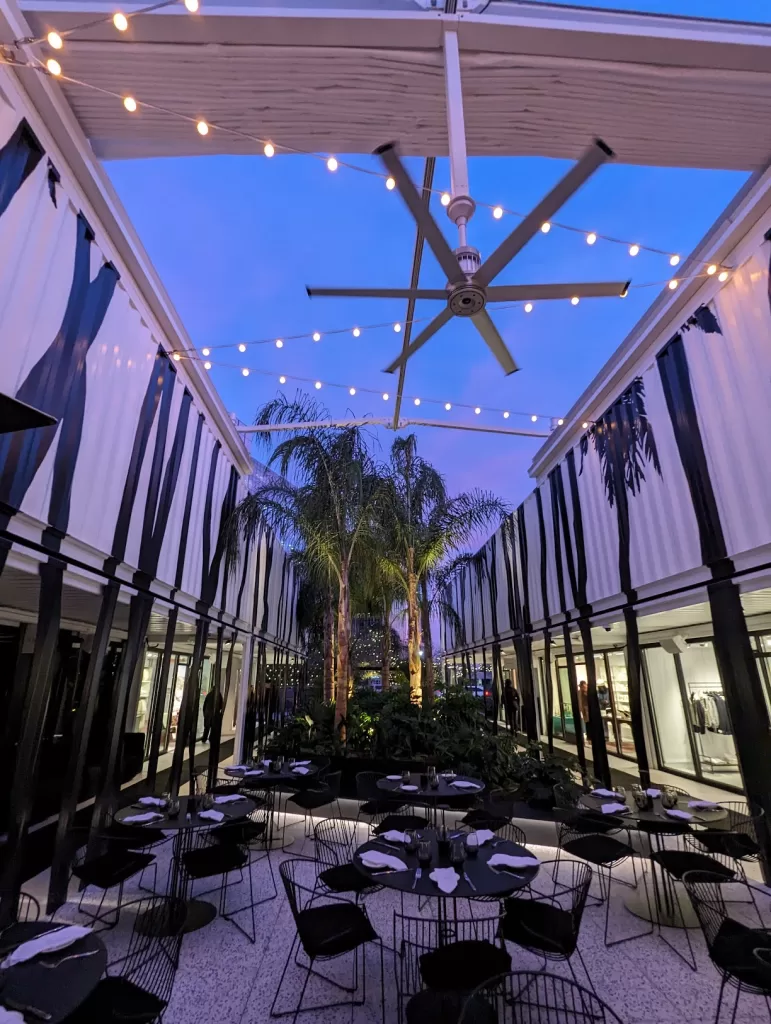 I was recently working for a luxury brand store in Raleigh, North Carolina. The city, part of the so-called “Research Triangle” area, is experiencing a surge in affluent communities and corporate developments, making it a promising location for high-end retail.
I was recently working for a luxury brand store in Raleigh, North Carolina. The city, part of the so-called “Research Triangle” area, is experiencing a surge in affluent communities and corporate developments, making it a promising location for high-end retail.
Several key factors, I believe, brought the brand to Raleigh. The city has potential for high-end or luxury sales: affluent communities within the Triangle area, Apple Inc. building a campus here, planning to offer more than 3000 positions (Apple North Carolina Campus), and approximately 1000 people relocating to Raleigh every month (WRAL.com). On the other hand, the scarcity of high-end brand presences provides a tremendous opportunity at present for luxury companies to thrive.
Consumer Behavior with Sales Trends
 North Carolina is a typical southern US state that is more on the conservative side, and the Triangle, although significantly distinct from the rest of NC, is no exception, at least as far as consumer behavior is concerned. This is particularly so for purchasing more expensive items like jewelry and high-end handbags. Female clients often “need” their partners to finance the pieces they like. If they visit alone and like something, the affection often dissipates once they return home, and they rarely come back. Additionally, information can easily get lost in translation and over time when passed on to their partners. From my own conversations with such potential customers, it was apparent that their families could easily afford the pieces they were interested in and had the potential to make a purchase, but it might take a long time for them to commit.
North Carolina is a typical southern US state that is more on the conservative side, and the Triangle, although significantly distinct from the rest of NC, is no exception, at least as far as consumer behavior is concerned. This is particularly so for purchasing more expensive items like jewelry and high-end handbags. Female clients often “need” their partners to finance the pieces they like. If they visit alone and like something, the affection often dissipates once they return home, and they rarely come back. Additionally, information can easily get lost in translation and over time when passed on to their partners. From my own conversations with such potential customers, it was apparent that their families could easily afford the pieces they were interested in and had the potential to make a purchase, but it might take a long time for them to commit.
In fact, by my observation, the affluent here rarely spend money on personal luxury items, especially on fashion bags and branded jewelry. They value the items they purchase more, and when making a significant purchase, it is often in high-end luxury items like beach houses and yachts as investments. Therefore, for smaller items, large transactions from a single order are rather uncommon.
It is all understandable. By the history of the area, people in the Triangle have typically not been exposed much to high-profile luxury concepts and stores that are more commonly found in cities much larger than Raleigh. Implanting this concept to influence their purchase behavior might take years. For now, if for example a jewelry brand wants to enter this market, targeting normal consumers with more accessible and affordable pieces would be beneficial, along with some more valuable high-profile pieces, like big gemstones of great quality. However, as the Triangle is a fast-growing and developing area with increasing immigration from both other parts of the United States and abroad, consumer behavior and expectations might soon change.
Another noticeable trait is the local preference for privacy or “peace,” which is important to understand in order to develop effective marketing strategies. For example, when I inquired for the contact information of potentially interested customers, some directly stated they wanted to opt out due to an abundance of spam messages and emails that they are already receiving. One insight from this observation is that direct messaging outreach might make people in this community feel alarmed and defensive; hence, indirect influence like ads on media could be more effective as these do not oblige them to respond.
Marketing Communications
 I see marketing communications as essential to bridge the gap between the brand and its consumers. If fewer people are aware of a brand or store, it naturally leads to lower interest and fewer conversions. As a marketer by training, it was natural for me to pay attention and to think constantly about ways to improve and enhance customer engagement.
I see marketing communications as essential to bridge the gap between the brand and its consumers. If fewer people are aware of a brand or store, it naturally leads to lower interest and fewer conversions. As a marketer by training, it was natural for me to pay attention and to think constantly about ways to improve and enhance customer engagement.
As part of casual market research in the store, I typically asked every visitor how they heard about the presence. Instagram (posts, paid ads from the mall that we collaborated with) and local news such as radio initially drove customers to the mall. Many others simply lived or worked nearby, or noticed the mall while driving past and found it intriguing enough to check it out.
One of my conclusions is the following. If a luxury brand or store enters a new market (such as the Triangle) by collaborating with a mall, they might be tempted to rely solely on the mall’s marketing efforts to promote their brand alongside other stores that share the mall. However, the content and quality of the ads created by the mall will likely be outside that brand’s immediate control, which may hurt the consistent storytelling that high-end brands often rely on. I observed this effect specifically when talking to customers, who told me they had never heard about the store from any source, a gap that could have been filled by a stronger and more direct media presence.
Based on my own observations and interactions with people in the store, I list in the following some digital marketing tips that I believe will be valuable for luxury brands that consider expanding into the Triangle, or similar areas elsewhere in the US.
- Act fast (Prepare and Post): Due to the delay in paid ads becoming effective, creatives and ads should be prepared before the launch of the project.
- Multi-format ads for broad influence: When it is unclear which type will be most effective, use various formats. For instance, on Instagram, some ignore “stories,” so story ads will not attract them, and vice versa.
- Utilize carousel, and video ads: A single-image ad can be useful, but a carousel or a short video can raise more interest and play well with social media algorithms.
- Think broadly about your target audience: In the Triangle area, targeting male customers for jewelry shopping is beneficial as they often make these purchases for their partners.
- Use CPM ads for physical conversions: If conversions are not planned online, e.g., in an online store, use cost per impression (CPM) ads rather than cost per click (CPC). This reduces audience bounce, as more required actions mean more effort.
- Use email and social channels for reminders: Remind customers about their interests and wishlist items, instead of frequent direct messaging. This approach is less pushy and does not obligate consumers to respond.
- Location tag on digital media: Submitting locations on Google and Facebook is crucial for making any physical presence visible online. It is as simple as checking in at a new place or adding a missing tag on Maps, making it easier and more trustworthy for potential customers to find.
Aside from digital marketing, traditional marketing remains impactful in many ways. In the Triangle, unlike for example New York City, most people drive, so radio ads can be very effective, as evidenced by the number of clients who visited because of them. The effectiveness depends on specific consumer behavior in different areas, so it would be useful to consult with local marketing agencies in order to use this channel most effectively.
 Ideally, every department within a company should communicate and learn from one another. However, in reality, this often does not happen. Sales associates, the front line of the retail industry, gather endless amounts of valuable information, but they are often overlooked. In retail, whether it is consumer goods or luxury, reacting quickly to trends is vital to stay ahead of competitors.
Ideally, every department within a company should communicate and learn from one another. However, in reality, this often does not happen. Sales associates, the front line of the retail industry, gather endless amounts of valuable information, but they are often overlooked. In retail, whether it is consumer goods or luxury, reacting quickly to trends is vital to stay ahead of competitors.
Ultimately, Raleigh, within the evolving Triangle, holds significant promise for esteemed luxury brands to lay down permanent roots. The city’s rapid development and the presence of a wealthy clientele offer a prime opportunity. It is not just a chance for expansion, it is also a prospect to connect and grow with an emerging market through a blend of online and offline marketing strategies. By tapping into and adapting to the unique preferences and trends of Raleigh’s residents, luxury brands can not only establish, but also nurture a lasting bond with this community. It is about more than just business – it is about becoming an integral part of Raleigh’s luxurious future, where tradition meets innovation.
 Do you find this article helpful or wish to discuss it further? Contact me at [email protected] or read more about me.
Do you find this article helpful or wish to discuss it further? Contact me at [email protected] or read more about me.
Discovering Raleigh’s Luxury Market: Consumer Insights and Marketing Strategies

I was recently working for a luxury brand store in Raleigh, North Carolina. The city, part of the so-called “Research Triangle” area, is experiencing a surge in affluent communities and corporate developments, making it a promising location for high-end retail.
Several key factors, I believe, brought the brand to Raleigh. The city has potential for high-end or luxury sales: affluent communities within the Triangle area, Apple Inc. building a campus here, planning to offer more than 3000 positions (Apple North Carolina Campus), and approximately 1000 people relocating to Raleigh every month (WRAL.com). On the other hand, the scarcity of high-end brand presences provides a tremendous opportunity at present for luxury companies to thrive.
Consumer Behavior with Sales Trends

North Carolina is a typical southern US state that is more on the conservative side, and the Triangle, although significantly distinct from the rest of NC, is no exception, at least as far as consumer behavior is concerned. This is particularly so for purchasing more expensive items like jewelry and high-end handbags. Female clients often “need” their partners to finance the pieces they like. If they visit alone and like something, the affection often dissipates once they return home, and they rarely come back. Additionally, information can easily get lost in translation and over time when passed on to their partners. From my own conversations with such potential customers, it was apparent that their families could easily afford the pieces they were interested in and had the potential to make a purchase, but it might take a long time for them to commit.
In fact, by my observation, the affluent here rarely spend money on personal luxury items, especially on fashion bags and branded jewelry. They value the items they purchase more, and when making a significant purchase, it is often in high-end luxury items like beach houses and yachts as investments. Therefore, for smaller items, large transactions from a single order are rather uncommon.
It is all understandable. By the history of the area, people in the Triangle have typically not been exposed much to high-profile luxury concepts and stores that are more commonly found in cities much larger than Raleigh. Implanting this concept to influence their purchase behavior might take years. For now, if for example a jewelry brand wants to enter this market, targeting normal consumers with more accessible and affordable pieces would be beneficial, along with some more valuable high-profile pieces, like big gemstones of great quality. However, as the Triangle is a fast-growing and developing area with increasing immigration from both other parts of the United States and abroad, consumer behavior and expectations might soon change.
Another noticeable trait is the local preference for privacy or “peace,” which is important to understand in order to develop effective marketing strategies. For example, when I inquired for the contact information of potentially interested customers, some directly stated they wanted to opt out due to an abundance of spam messages and emails that they are already receiving. One insight from this observation is that direct messaging outreach might make people in this community feel alarmed and defensive; hence, indirect influence like ads on media could be more effective as these do not oblige them to respond.
Marketing Communications

I see marketing communications as essential to bridge the gap between the brand and its consumers. If fewer people are aware of a brand or store, it naturally leads to lower interest and fewer conversions. As a marketer by training, it was natural for me to pay attention and to think constantly about ways to improve and enhance customer engagement.
As part of casual market research in the store, I typically asked every visitor how they heard about the presence. Instagram (posts, paid ads from the mall that we collaborated with) and local news such as radio initially drove customers to the mall. Many others simply lived or worked nearby, or noticed the mall while driving past and found it intriguing enough to check it out.
One of my conclusions is the following. If a luxury brand or store enters a new market (such as the Triangle) by collaborating with a mall, they might be tempted to rely solely on the mall’s marketing efforts to promote their brand alongside other stores that share the mall. However, the content and quality of the ads created by the mall will likely be outside that brand’s immediate control, which may hurt the consistent storytelling that high-end brands often rely on. I observed this effect specifically when talking to customers, who told me they had never heard about the store from any source, a gap that could have been filled by a stronger and more direct media presence.
Based on my own observations and interactions with people in the store, I list in the following some digital marketing tips that I believe will be valuable for luxury brands that consider expanding into the Triangle, or similar areas elsewhere in the US.
- Act fast (Prepare and Post): Due to the delay in paid ads becoming effective, creatives and ads should be prepared before the launch of the project.
- Multi-format ads for broad influence: When it is unclear which type will be most effective, use various formats. For instance, on Instagram, some ignore “stories,” so story ads will not attract them, and vice versa.
- Utilize carousel, and video ads: A single-image ad can be useful, but a carousel or a short video can raise more interest and play well with social media algorithms.
- Think broadly about your target audience: In the Triangle area, targeting male customers for jewelry shopping is beneficial as they often make these purchases for their partners.
- Use CPM ads for physical conversions: If conversions are not planned online, e.g., in an online store, use cost per impression (CPM) ads rather than cost per click (CPC). This reduces audience bounce, as more required actions mean more effort.
- Use email and social channels for reminders: Remind customers about their interests and wishlist items, instead of frequent direct messaging. This approach is less pushy and does not obligate consumers to respond.
- Location tag on digital media: Submitting locations on Google and Facebook is crucial for making any physical presence visible online. It is as simple as checking in at a new place or adding a missing tag on Maps, making it easier and more trustworthy for potential customers to find.
Aside from digital marketing, traditional marketing remains impactful in many ways. In the Triangle, unlike for example New York City, most people drive, so radio ads can be very effective, as evidenced by the number of clients who visited because of them. The effectiveness depends on specific consumer behavior in different areas, so it would be useful to consult with local marketing agencies in order to use this channel most effectively.

Ideally, every department within a company should communicate and learn from one another. However, in reality, this often does not happen. Sales associates, the front line of the retail industry, gather endless amounts of valuable information, but they are often overlooked. In retail, whether it is consumer goods or luxury, reacting quickly to trends is vital to stay ahead of competitors.
Ultimately, Raleigh, within the evolving Triangle, holds significant promise for esteemed luxury brands to lay down permanent roots. The city’s rapid development and the presence of a wealthy clientele offer a prime opportunity. It is not just a chance for expansion, it is also a prospect to connect and grow with an emerging market through a blend of online and offline marketing strategies. By tapping into and adapting to the unique preferences and trends of Raleigh’s residents, luxury brands can not only establish, but also nurture a lasting bond with this community. It is about more than just business – it is about becoming an integral part of Raleigh’s luxurious future, where tradition meets innovation.
![]() Do you find this article helpful or wish to discuss it further? Contact me at [email protected] or read more about me.
Do you find this article helpful or wish to discuss it further? Contact me at [email protected] or read more about me.